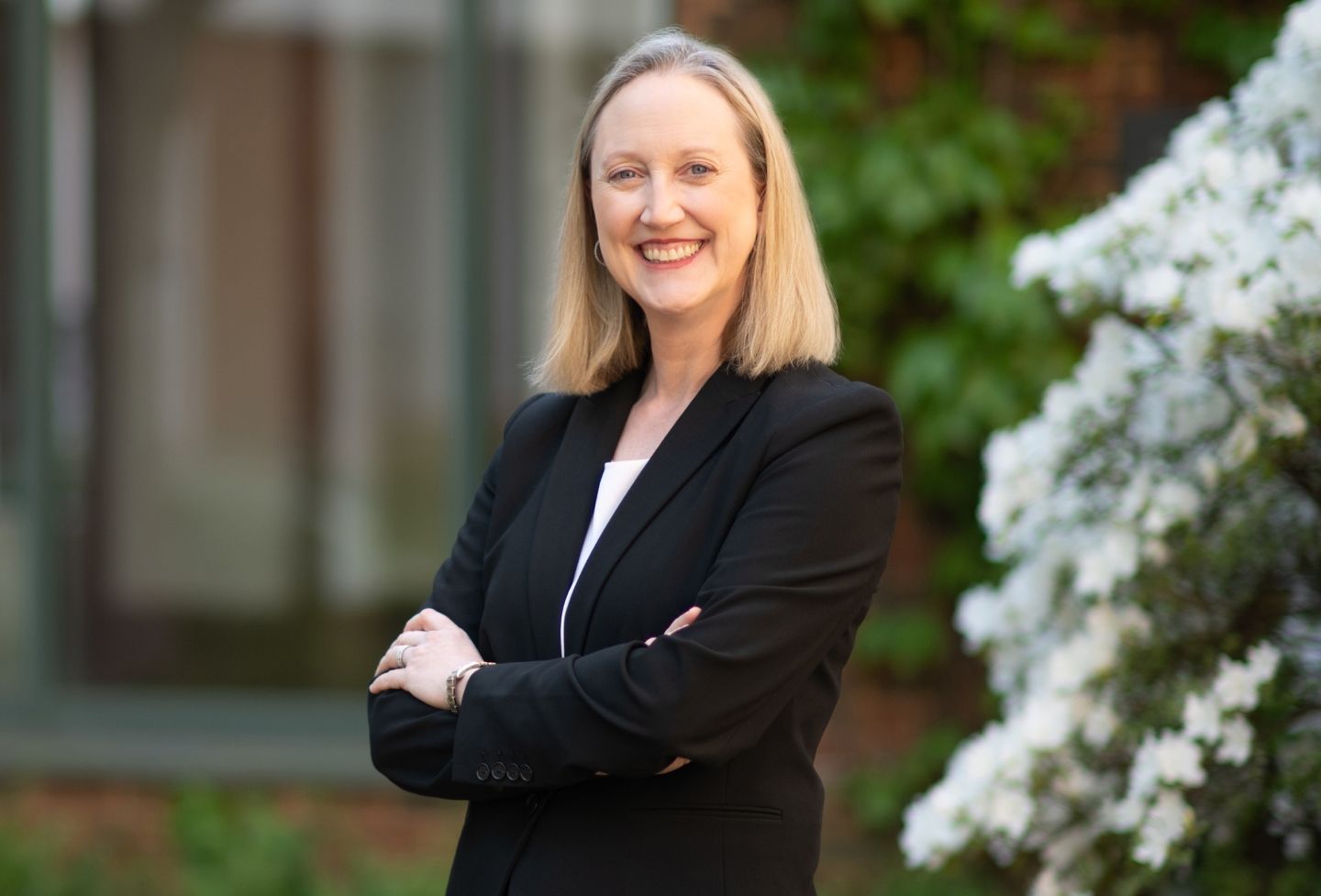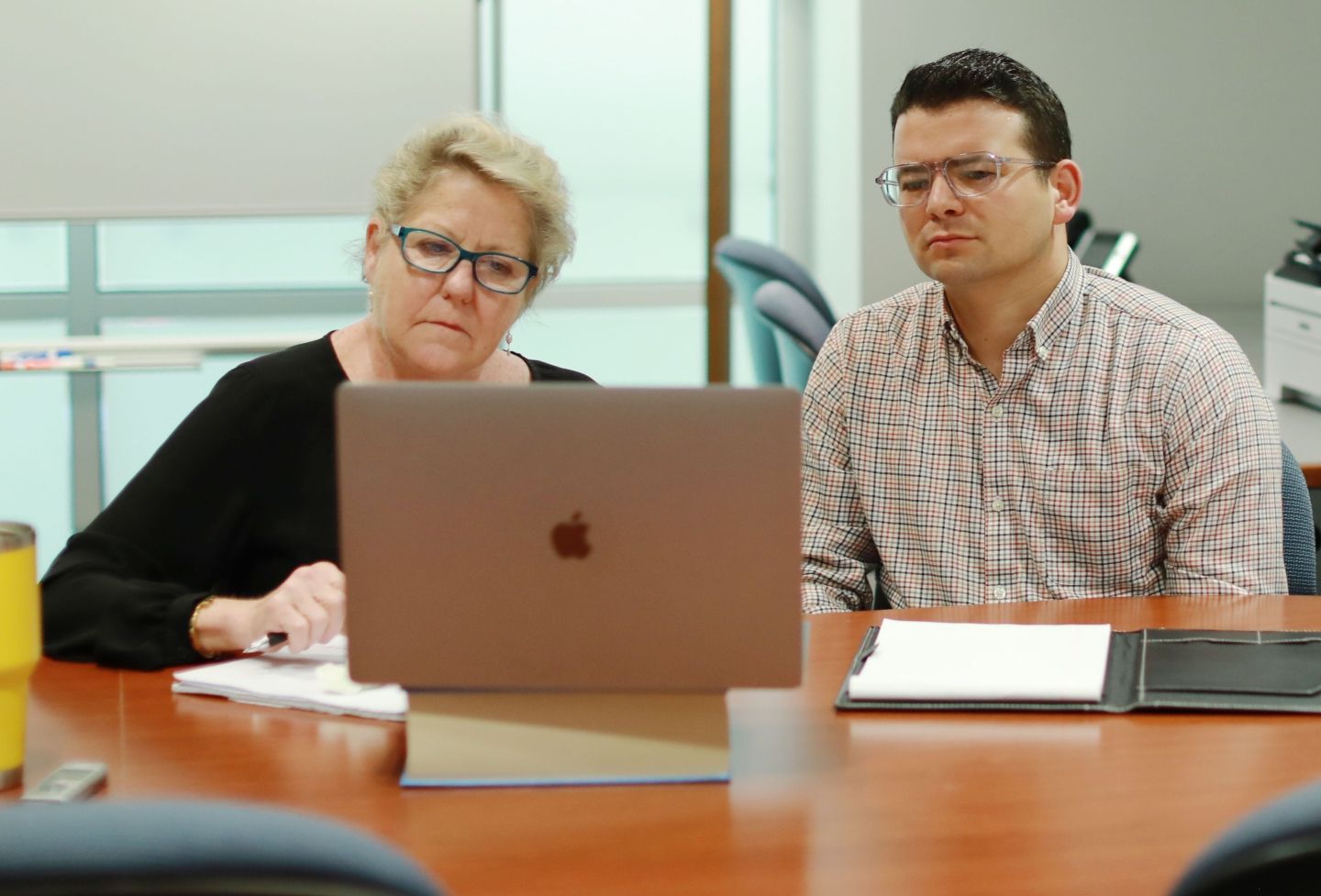University of Virginia law professor Richard Bonnie, an expert in mental health and criminal law, testified Thursday before a panel convened by Connecticut Gov. Daniel Malloy to recommend policy reforms in the wake of the deadly Sandy Hook Elementary School shooting.
Bonnie, director of UVA's Institute of Law, Psychiatry and Public Policy, previously served on a similar commission in Virginia following the 2007 shootings at Virginia Tech.
The following are Bonnie's full remarks to the Sandy Hook Advisory Commission:
I am honored to have been invited to speak with you as you begin your important and challenging task. My assignment is to reflect on the challenges of making policy in the shadow of tragedy based on our experience in the wake of Seung Hui Cho's murderous rampage on the campus of Virginia Tech on April 17, 2007. I agreed to do so, not because I have any unique insight, but because, like everyone else in our saddened nation, I want so deeply for you to succeed. I will make a few general observations and offer three specific suggestions about how you might go about your task.
The greatest risk we faced in 2008, and that you face today, is moral pressure to take action quickly and decisively. As we all know, haste can lead to overreaction based on erroneous empirical suppositions. It can also spawn disproportionate responses that either erode the privacy or liberty of people with mental illness without adequate justification or impose onerous new burdens on law enforcement agencies, health care providers or schools that they do not have the resources to carry out. I know that Gov. Malloy is well aware of these risks and has directed you to undertake a comprehensive and deliberate inquiry over a two-year period. You may find that you need even more time.
Tragedy can compromise thoughtful policymaking, but it also creates opportunity for fundamental reforms that would otherwise have been impossible. That tragedy is so often the stimulus for change is unfortunate, but it is nonetheless true that the riveting and painful events in in Columbine, Blacksburg, Tucson, Aurora and Newtown, represent unparalleled occasions for public education — indeed for sustained public education — an opportunity all the more precious and useful in this age of 24-hour news cycles. The point was vividly illustrated in our experience in the wake of the shootings at Virginia Tech.
Let me step back at this point and summarize the chronology for mental health law reform in Virginia. Widespread dissatisfaction with gaps in mental health services, pressures on emergency departments, jails and acute care hospitals, with increasing criminalization of people with mental illness, and increasing complaints about every aspect of the civil commitment process led the chief justice of Virginia's Supreme Court to initiate a comprehensive reform process, which I agreed to chair.
After an intense planning during the summer of 2006, we established a 25-member commission drawn from all branches of government and representatives of the major stakeholder constituencies. The first meeting was held in October of 2006. We had a two-year time frame in mind for a comprehensive report. During the planning process, we had discussed the need to plan a public education effort to create the necessary momentum for sweeping reforms. Then, on April 17, the Virginia Tech shootings and events leading up to it called attention to the very issues we were studying, including the missed opportunities for treatment and the lack of procedures for monitoring and enforcing mandatory outpatient treatment orders.
Commission members assisted the Virginia Tech Review Panel appointed by Gov. Kaine, which issued its report in August, and we accelerated our deliberations in order to have a report and specific consensus recommendations available for the General Assembly in December.
So, my point is that tragedy heightens, concentrates and even sustains public awareness. In so doing, it also creates conditions that nurture public engagement in the policymaking process.
Consider for example, the deep and pervasive sense of emotional solidarity that we all have with the families victimized by the shooting in Newtown. As you know, every parent in Newtown, in Connecticut and in the nation has shed tears, including President Obama, who did so as parent-in-chief for the nation. In the immediate aftermath of the Virginia Tech shootings, it was as if the campus of the University of Virginia and other colleges across the state all became part of the campus at Virginia Tech. At the Senate Finance Committee retreat held at Virginia Tech in November, we all felt that we were on hallowed ground. I came to know many of the families of the victims and other students who escaped safely from the violence that day.
Most of the families of these tragedies invest their own time in advocacy, some sooner and some much later, in order to assure that something useful emerges from their grievous loss. As proponents of change, you cannot have more persuasive allies than the families of the victims — and they are in it for the long run.
The opportunity for galvanizing political support for your efforts is also enhanced by the broad public yearning for solutions and for finding common ground. The partisanship and ideological rancor to which we have become accustomed in recent years seems to recede in the aftermath of tragedy. The public yearning for agreement in the wake of the horror at Sandy Hook Elementary School will strengthen your chance to formulate consensus reforms and to build public support for them. Even in the battleground state of Virginia — a state with deep partisan divisions and a divided government — we were able to craft major mental health and campus safety reforms that received unanimous votes in the General Assembly three years in a row.
My first suggestion is that you organize your activities in a way that will take maximum advantage of this opportunity to invite public participation and engagement. Our commission, which had about 25 members, created five task forces when we began and later added two others. Each task force had 10 to 15 members and we were thereby able to engage about 100 additional representatives from all the stakeholder constituencies in a process of identifying the issues and options, fleshing out the arguments, and finding consensus proposals to be presented to the commission. This structure turned out to be particularly useful after the Virginia Tech shootings because the task force meetings provided a public forum for informed debate about sensitive issues, such as the criteria for involuntary commitment and the proper role of mandatory outpatient treatment before the commission formulated its proposals.
This complex structure requires a significant amount of advance planning as well as a specific charge to each task force or workgroup that the commission creates. So you would have to do a lot of work up front sorting through the issues in order to give adequate direction to the task forces. At the same time, however, it is also important for the commission to remain nimble, leaving the door open to take on unforeseen topics or issues.
In light of the disturbing number of tragic incidents over the last few years, it is difficult to imagine that important policy problems relating to mental health, school/campus safety, or even gun control, have so far escaped notice. However, I predict that the investigation of the Sandy Hook shootings will expose unrecognized shortcomings or gaps in current policies, programs or practices that should be addressed. That was certainly true in the Virginia Tech shootings. When we initiated the work of the commission, I doubt that many people involved in our work had ever heard of FERPA, and mental health issues among college students and campus safety issues were not on our screen when we framed the commission's goals and established its task forces. Nor did our preliminary charge to the civil commitment task force include the intersection of emergency evaluation, civil commitment and health care privacy laws, including both HIPAA and the applicable state statute. All of these issues exploded into public view in the Virginia Tech Panel's report. So the commission immediately created a new task force to address privacy issues.
So here is my second suggestion — if you do create task forces, be as specific as possible in defining their tasks while being flexible enough to take on new issues as they arise. It will happen.
Third, and finally, I want to encourage you to think now about the challenge of implementing and sustaining whatever programmatic and practice changes you eventually recommend, whether they relate to school security, responses to people experiencing mental health crises, efforts to increase access to mental health care, or even efforts to assure that people with mental health disqualifications are reported to the background check system. After the commission has done its work, it is important to identity or create a body or agency responsible for implementation and oversight of the reforms and for recommending refinements when needed. This task is absolutely essential when resources are needed to implement and sustain progress.
I will give you one example of many in Virginia. A number of the proposals made by the Virginia Tech panel, and adopted by the General Assembly, sought to reduce the risk of violence and suicide on campus by increasing mental health awareness, removing barriers to information sharing, and requiring public colleges establish threat assessment teams. Three years later, the General Assembly commissioned a study of actual practices on the state's campuses. There was good news — best practices had been widely embraced in the residential colleges, and many barriers to communication had been removed. But some obstacles remained, particularly in the lack of coordination between the colleges and the mental health services providers and hospitals. Most worrisome was the lack of mental health service capability in the state's community colleges. Not only do they lack counseling services (even on the large urban campuses), but they lack the clinical expertise to staff the threat assessment teams or to screen and refer possibly troubled students.
Our concerns about community colleges were accentuated by the events in Tucson when Jared Loughner, an obviously troubled community college student attempted to assassinate Congresswoman Giffords and killed a federal judge and five other people and wounded 12 others.
I think that every state should look carefully at the mental health service capability and campus safety programs and practices in its community colleges, but for my present purposes, I simply want to highlight the scope of the challenge and the need for a long-term strategy for implementing reform.
I am often asked these days something along the lines of "So, what has been accomplished since 2007? Have things improved? Have the reforms been implemented?" The full answer would exhaust your patience with me, so I will give you the short answer. We laid a strong legal foundation, much of which is in the nature of enabling legislation. Genuine progress depends on filling the gaps in community mental health services. The General Assembly made a "down payment" on the necessary investment in fiscal year 2009, but then the recession began and we have just been holding on since then. Much remains to be done. I hope it does not take another tragedy to generate the political will to sustain the effort in Virginia. System reform is an ongoing process, not an event. I encourage you to reflect that understanding in your work.
I'm certain that these observations and suggestions were self-evident, but it is worth reminding ourselves, as President Obama noted in his Second Inaugural Address, that even the self-evident truths declared in the Declaration of Independence are not self-executing.
Thank you again for the opportunity to address you as you launch your important task.
Founded in 1819, the University of Virginia School of Law is the second-oldest continuously operating law school in the nation. Consistently ranked among the top law schools, Virginia is a world-renowned training ground for distinguished lawyers and public servants, instilling in them a commitment to leadership, integrity and community service.


